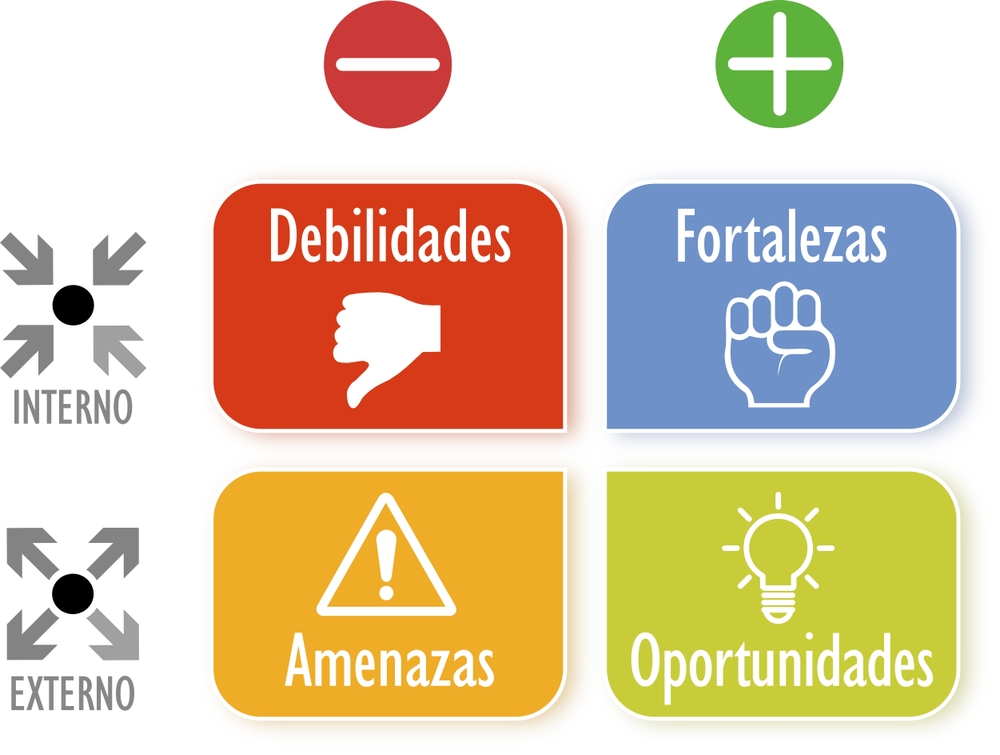LogiCommerce is trusted by global enterprise brands and wholesalers, across industries
SWOT analysis is a widely used tool for assessing a company's current position and planning a sound strategy for the future. From its Spanish acronym (weaknesses, threats, strengths, opportunities), SWOT is a scheme that analyzes internally and externally the variables that influence a product's success.
SWOT analysis can be applied to any product, regardless of its size, sector or market. Here are some tips for using SWOT analysis to evaluate your product.
It is important to recognize the weaknesses of your product to identify the areas you need to work on to improve it. To identify these weaknesses, you can consider the following aspects:
Product features: there are any limitations in terms of product features, for example, it is not visually appealing, it does not have the necessary functionality, it is too heavy, or it does not comply with current regulations.
User experience: the user experience is key to the success of the product. Does your product have any problems that hinder your customers' experience, such as navigation problems, technical glitches, slow page loading, etc.? Is the interface unintuitive? Is it difficult to use?
Market positioning: Is the purpose of your product clear? Is it oriented towards a specific group of customers or is its use too broad? Is its price competitive compared to other similar products in the market?
Physical and human resources: do you have sufficient physical and human resources to meet the demands of your customers? Is the staff adequate for the task or is more training needed?
Once you have identified the weaknesses of your product, you should establish an action plan to address them and highlight the positive aspects. SWOT analysis is essential for the growth and evolution of any product. If you learn to look objectively at your product, you will be able to develop a clear-sighted solution.

Threats are factors external to your product that can influence its success. Some examples of threats you should consider include:
Competition: do you have many competitors in your market; are they competing with you for lower prices, better quality, or even a better marketing campaign than yours?
Changes in the market: there may be changes in the economy or customer expectations that affect your potential sales. For example, a product that used to be popular a few years ago may lose market traction if consumers prefer to buy products with new and more advanced features.
Changes in technology: is your product using obsolete technology, and is there an emerging technology that could displace you?
Regulatory issues: Government regulations may block your product's growth. A change in regulations affecting your product could hurt its distribution or use.
To deal with these threats, it is important to be aware of the potential risks and be prepared to adjust your sales and marketing strategy. Find ways to keep your customers interested and retain your market, whether by offering lower prices, upgrading technology, or ensuring that your products comply with current regulations.
Threats can be an opportunity to improve your product and gain a stronger position. By being aware of changes in the market and in the competition, you can make your product adapt more quickly and effectively to stay in the market.

Strengths are the internal factors of your product that distinguish it from the competition. Strengths can be different for each product, but some examples of common strengths include:
Unique features: what features or functionalities distinguish your product from the competition? This should be highlighted in the sales and marketing strategy.
Brand recognition: is your brand recognized in the market and does it have a good reputation and trust for customers? If so, this can be a strong competitive advantage.
Market positioning: is your product the market leader and does it have a dominant position in a specific niche? You can leverage this positioning to expand and grow with new complementary products.
Human team: Do you have a highly trained team that is committed to the product? The talent of your team can be the basis for product quality and commercial success.
Identifying your product's strengths is important to differentiate yourself from the competition and face any threats in the market. Once you have identified your strengths, you must do what is necessary to highlight them and emphasize their value to potential customers.
Communicate those strengths through advertising and product promotion, highlighting your product's positioning, functionality and unique brand values. If you do a good job of highlighting your product's strengths, you can use this to expand its reach and ensure its success.

Opportunities are external factors that can be leveraged to drive product promotion and success. Some opportunities you may want to consider include:
Trends in the market: is there a trend in the market that fits your product, or would it be a good opportunity to enter that market? For example, if there is a growing demand for eco-friendly products, perhaps this is an opportunity to highlight the eco-sustainability of your brand.
Events: Are there any events such as trade fairs, conferences, exhibitions or even online events that can be used to present the product and expand your market?
New technologies: are there any new emerging technologies that you could incorporate into your business or products to improve product quality and customer satisfaction?
Target audience: are there any emerging communities or target audiences that would be an effective fit for your product? If so, you should focus your promotional efforts on them.
Identifying and taking advantage of these opportunities can be the key to continued success. By taking these opportunities into account, you will be able to fine-tune your product promotion and reach a new group of customers. Every opportunity is an open door to growth and development of your brand.

In short, SWOT is an essential tool for assessing the weaknesses, threats, strengths and opportunities of any product. By recognizing each of these factors, you can develop a solid strategy for the future of your product and ensure commercial success. Through ingenuity and creativity in promoting your product, you can highlight its strengths, overcome its weaknesses, address market threats and seize opportunities to grow your brand and achieve success.
